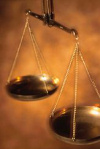The Law in Theory
 In this section we describe how the law is supposed to work, and some basic principles in the way it's meant to be applied with regard to speeding offences. Before you begin, you might like to familiarise yourself with a few basic facts and terms in our glossary.
In this section we describe how the law is supposed to work, and some basic principles in the way it's meant to be applied with regard to speeding offences. Before you begin, you might like to familiarise yourself with a few basic facts and terms in our glossary.
So to start with, here are a few simple quiz questions about the application of traffic law. Incidentally, if you disagree with any of the answers, please don’t write to us as these points were discussed very thoroughly in court during our case. Please write instead to Gwent Magistrates' Court at Newport.
|
|
|
|
|
|
|
|
|
|
As far as we can tell, under the law, you could be driving along at 70 mph and a police officer could drive up behind you and pull you over saying that you had been traveling at 120 mph and you could be convicted on his "expert opinion" alone. All of the stuff you hear about speeding tickets, cautions, written NIPs, corroboration etc. appear to be down to individual constabularies' procedures, and not the law. |
|
|
Precedent was set and has never been successfully challenged:
- Weatherhogg v Johns (1931) 95JP Jo 364, DC.
- Russell v Beasley [1937] I All ER 527, DC.
In these cases the defendant was convicted on the evidence of one police officer following the defendant's car and noting the speedometer reading on the police vehicle, and of a person who checked the speedometer and found it to be recording accurately.


Information
News
Latest forum topics


Page updated: 17 Oct 2006




